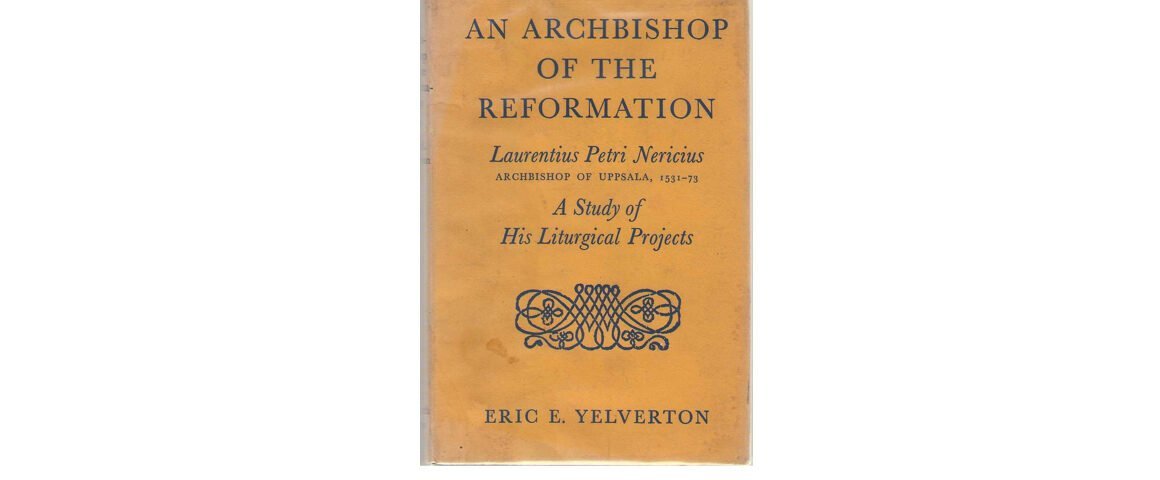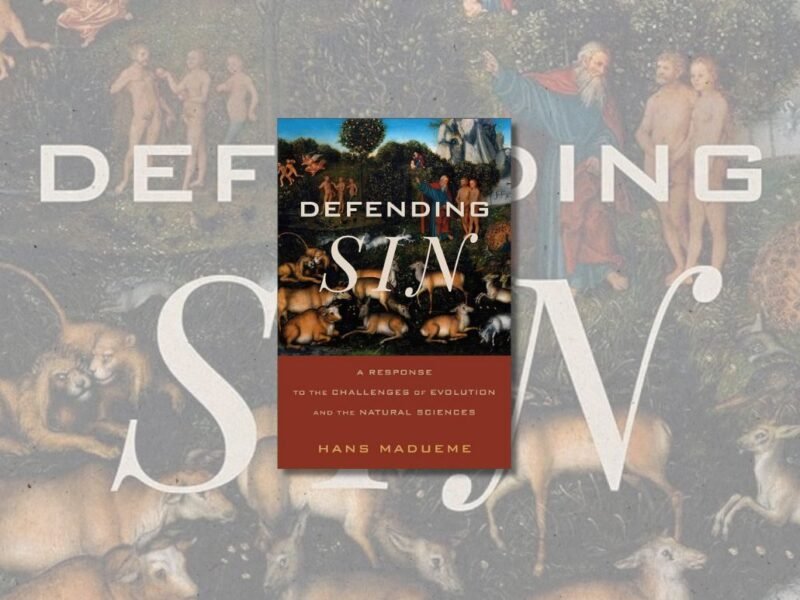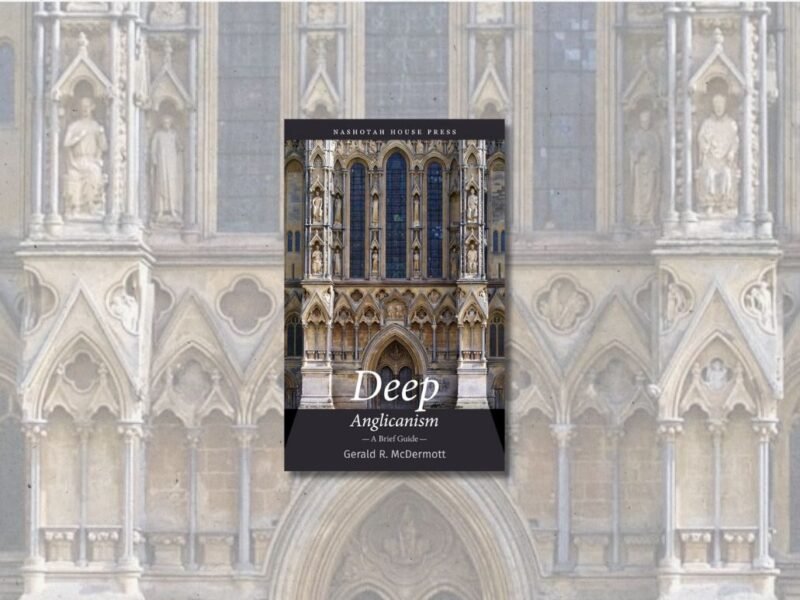An Archbishop of the Reformation: Laurentius Petri Nericius, Archbishop of Uppsala, 1531-73. A Study of His Liturgical Projects. By The Rev. Dr. Eric E. Yelverton. London: The Epworth Press, 1958. xxi + 153 pp.
Introduction
It is quite unusual to review a book that is long out of print; however, books from previous generations help us see things from a perspective removed from the myopic view of the present. While the current era is rife with ecclesiastical issues and polemics, it is easy for us to lose sight of those issues which reside outside of our linguistic capabilities. In the world of “Google Translate” we forget that language remains an entrenched barrier, even in academia. In the field of ecclesiastical history, this is especially true concerning the study of the Scandinavian National Churches. We know the names of Calvin, Cranmer, and Melanchthon and each of them have multiple biographies, historiographies, and even hagiographies(!) available in the English language. But most of us have little knowledge of Laurentius Petri Nericius, Archbishop of Uppsala and the Swedish equivalent to the English Archbishop Thomas Cranmer. While dated, An Archbishop of the Reformation remains as relevant today as at its first publishing in 1958. This relevance resides in the remarkable correspondence between the Swedish Reformation and the English Reformation; a correspondence which can help modern Anglicans better understand and appreciate their own tradition.
Practical Considerations
Although a small book, An Archbishop of the Reformation accomplishes a great deal in its 144 pages (especially considering 45 of those pages are appendices). By presenting a portion of Petri’s work in English, Yelverton intends to “throw light upon the character and achievements of this remarkable man” (vii). In the first third of the book Yelverton gives a biographical sketch of Petri with special focus on the liturgical interplay between Archbishop Petri, his younger brother (and more avant-garde liturgist) Olavus Petri, and the various Kings of Sweden between 1531‒73. This biographical section is remarkable, not only due to its incredibly short length, but because, despite its size, it is one of the most holistic treatments of Petri that can be read in English.
The remaining two thirds of the book’s prose examine, section-by-section, The Church Order of 1571 (analogous to a Book of Common Prayer). Yelverton readily weighs in theologically on Petri’s liturgical decisions and continually compares and contrasts them to both Olavus Petri’s former liturgical ordos and the corresponding liturgies in the Church of England. This final section is then complemented by nine appendices which include the gross majority of The Church Order in English.
Anglican Application
Yelverton wrote on Petri out of more than just “antiquarian interest” but for particular purpose during a pivotal moment in church history (ix). The year 1958 was right at the cusp of the Liturgical Movement and was the same year that the Lambeth Conference issued its first ever sweeping guidelines for Prayer Book revision.[1] Which begs the question: why Petri, and does his life and work have implications for modern Anglicans? The answer lies in the uniqueness of the Swedish Reformation and its bearing upon Anglican theological identity.
Laurentius and Olavus Petri were first-generation Lutherans. They moved to Germany to study at the university of Wittenberg in 1517 (right before Luther posted the 95 Theses) and did not return to Sweden until 1527. The Petris’ time in Wittenberg was life-changing. The Lutheran tradition which they imbibed would accompany them back to Sweden. However, Yelverton goes to great lengths to demonstrate that neither Olavus nor Laurentius sought to replicate Luther’s project in Sweden.
When Rome refused King Gustavus Vasa’s request to reform the Church in Sweden without Danish ecclesiastical interference, Vasa removed all of the Roman legates and called upon a council of the Swedish church to fill the archiepiscopal see of Uppsala, which had been vacant for over a decade. The council elected Laurentius Petri to the post at the young age of thirty-two, a post he would hold until his death forty-two years later in 1573. Over the next four decades Laurentius would slowly reform the Swedish mass. His starting point was always the German material, but the final result was always a unique liturgical composition.
Within modern Anglicanism there is a perennial struggle to understand the Anglican theological tradition. The most common error in this struggle is to seek to conform Anglicanism to either strict Dortian Reformed theology or Tridentine Roman Catholic theology. Instead, there is much to be learned by studying Petri and realizing that his Protestant tradition was distinctly Swedish and ought not be conflated with continental Lutherans. The same can be said of the Anglican tradition. While certainly influenced by the continental reformers, the English Reformation yielded a unique theological tradition which ought to be understood on its own terms and not merely as a derivative. Learning about Petri can help us better understand ourselves in this arena.
Conclusion
Yelverton concludes his monograph with a scriptural quote which he applies to Petri: “He being dead yet speaketh” (Heb 11:4, 144). Writing to fellow clergy in the Church of England, Yelverton’s intention is to bring a voice from the past to bear on the modern situation. The liturgical renewal movement of the 1950s was, in some ways, not so dissimilar from the sixteenth century; moreover, it bears much resemblance to the Anglican realignment of today. Yet, the voice of Laurentius Petri is foreign enough that Anglophones can appreciate it without being mired down in peculiar polemics. Not only does Petri remind us that reformed theology need not be at odds with catholic practice, he helps us see our own unique theological tradition for what it is without seeking to conflate it with continental traditions.
Notes
- Lambeth Conference 1958, The Encyclical Letter from the Bishops, Together with the Resolutions and Reports. (London: Society for the Promotion of Christian Knowledge, 1958), 2.83‒5. ↑







'Book Review: “An Archbishop of the Reformation”' has no comments
Be the first to comment this post!